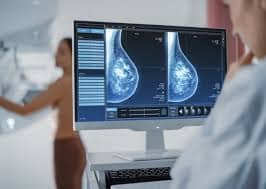Innovations in Mammography: 3D Mammograms and More
As you consider your annual health screenings, you may wonder about recent advances in mammography technology. The field has seen remarkable progress, with innovations like 3D mammograms revolutionizing breast cancer detection. These cutting-edge techniques offer improved accuracy and earlier diagnosis, potentially saving lives through swift intervention. In this article, you’ll explore the latest developments in mammography, from tomosynthesis to contrast-enhanced imaging. You’ll learn how these advancements benefit patients and medical professionals alike, reducing false positives and unnecessary biopsies. By understanding these innovations, you can make informed decisions about your breast health and screening options.
What is Digital Mammography?
Digital mammography is an advanced breast screening technique that has revolutionized the field of breast cancer detection. Unlike traditional film-based mammograms, digital mammography uses electronic detectors to capture X-ray images of the breast. These images are then converted into digital data that can be viewed on a computer screen.
The advantages of digital mammography are numerous. It offers higher-quality images that are easier to analyze and compare to previous results. Radiologists can manipulate the contrast and magnification of these images, potentially improving the detection of subtle abnormalities. Additionally, digital mammograms expose patients to less radiation and allow for easier storage and sharing of images between healthcare providers.
Is Digital Mammography Better Than Traditional Mammograms?
Digital mammography represents a significant advancement in breast screening technology, offering several advantages over traditional film mammography. According to Health Images, digital mammograms provide faster image processing, reducing exam time by an average of 11 minutes. They also deliver a 50% lower radiation dose compared to film mammograms.
One of the most notable innovations in advanced breast screening is 3D mammography, also known as digital breast tomosynthesis (DBT). Studies have shown that 3D mammograms can detect breast cancer more effectively, especially in women with dense breast tissue. This technology creates multiple cross-sectional images, allowing for better visualization of architectural distortions, microcalcifications, and nodules that might be obscured in 2D images.
What are Tomosynthesis (3D Mammograms)?
Tomosynthesis, also known as 3D mammography, is an advanced form of digital mammography that creates three-dimensional images of breast tissue. This innovative technology uses low-dose X-rays to capture multiple angles of the breast, which are then reconstructed into a 3D model. The result is a more detailed view that allows radiologists to examine breast tissue layer by layer, significantly improving cancer detection rates and reducing false positives. This advanced breast screening method is particularly beneficial for women with dense breast tissue, as it helps overcome limitations of standard 2D mammograms by providing clearer, more comprehensive images.
Advantages of 3D Mammograms Over 2D Digital Mammograms
3D mammograms, also known as digital breast tomosynthesis, offer significant advantages over traditional 2D digital mammography. Studies show that 3D mammograms can detect up to 40% more invasive breast cancers compared to 2D mammograms, making them a powerful tool in advanced breast screening. This innovative technology creates multiple low-dose X-ray images from different angles, allowing radiologists to view breast tissue in thin “slices” rather than a flat image.
3D mammograms are particularly beneficial for women with dense breasts, as they can better distinguish between cancer and dense tissue. Additionally, 3D mammograms have a lower call-back rate for further testing, reducing anxiety associated with false alarms and unnecessary biopsies. This improved accuracy in digital mammography enhances early detection and provides patients with more treatment options and improved outcomes.
Disadvantages and Limitations of Digital Mammography
While digital mammography offers many benefits, it’s important to understand its limitations. False-negative results occur in 4% to 34% of cases, meaning some cancers may be missed. Advanced breast screening techniques like digital mammography can also produce false-positives, leading to unnecessary anxiety and additional testing. About half of women getting annual mammograms over a decade will experience a false-positive result.
Additionally, digital mammography is more expensive than traditional film-based methods, potentially limiting accessibility. The technology is also more sensitive to temperature changes, which can affect image quality. While digital mammography reduces radiation exposure, it doesn’t eliminate all risks associated with X-ray imaging.
Conclusion
As you consider your breast health, remember that mammography technology continues to advance rapidly. From 3D imaging to AI-assisted analysis, these innovations are improving cancer detection while reducing false positives and unnecessary follow-ups. While standard 2D mammograms remain valuable, discussing newer options with your doctor can help determine the best screening approach for your individual needs. Stay informed about emerging technologies, but don’t neglect tried-and-true preventive measures like regular self-exams and annual check-ups. With ongoing research and development in the field, the future of mammography looks bright, offering hope for earlier detection and improved outcomes for breast cancer patients worldwide.
Disclaimer: The content for this article is for informational purposes only and is not a substitute for professional medical advice, diagnosis, or treatment. Always consult your oncologist with any questions regarding a medical condition. Do not disregard medical advice or delay seeking it based on information from this site.

